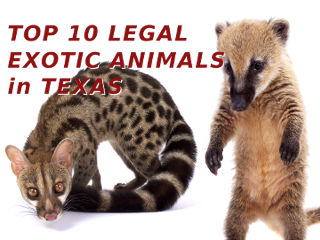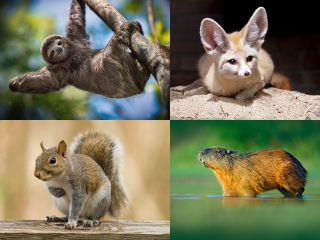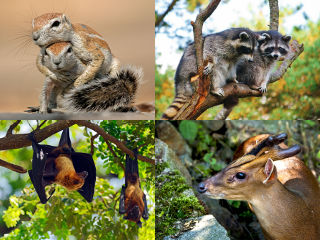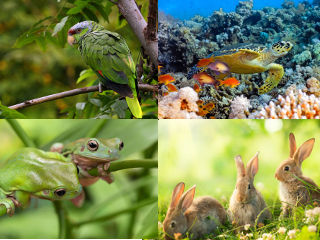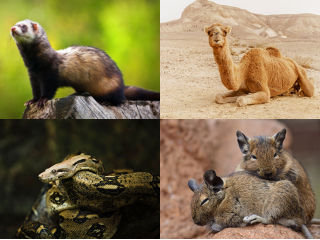Many animal lovers dream of owning an exotic pet, but it is important to know that exotic pet ownership is a big responsibility and commitment. In the state of Texas, several different types of exotic animals are legal to own. It is important to mention, though, that, as with adopting any pet, you’ll need to do proper research about the needs of the animal you wish to keep. You’ll also need to check with the local counties and cities in Texas to verify that the ownership of your preferred type of pet is legal in that specific area and doesn’t require any special license or permit for ownership.
What you should know before bringing home an exotic pet
Before bringing home an exotic pet, there are a few things you must first do. As previously mentioned, the first step is to look into the needs, requirements, and lifestyles of the pet you are interested in and ensure that it is in line with what you can provide. Secondly, once again, though a pet may be legal in Texas, some counties or municipalities may have varying rules, regulations, or restrictions on the ownership of exotic animals. You’ll want to call or go to your local government office and ensure that it is possible to have the pet of your choice in your area. Finally, the last thing to consider is your proximity to a qualified specialty or exotic veterinarian. Exotic animals have unique needs and require care from specialized veterinarians, so you’ll want to ensure that you have a provider within a reasonable distance that can care for your pet. Once all of these things have been considered, then you are free and clear to bring home your new exotic pet!
Capybara
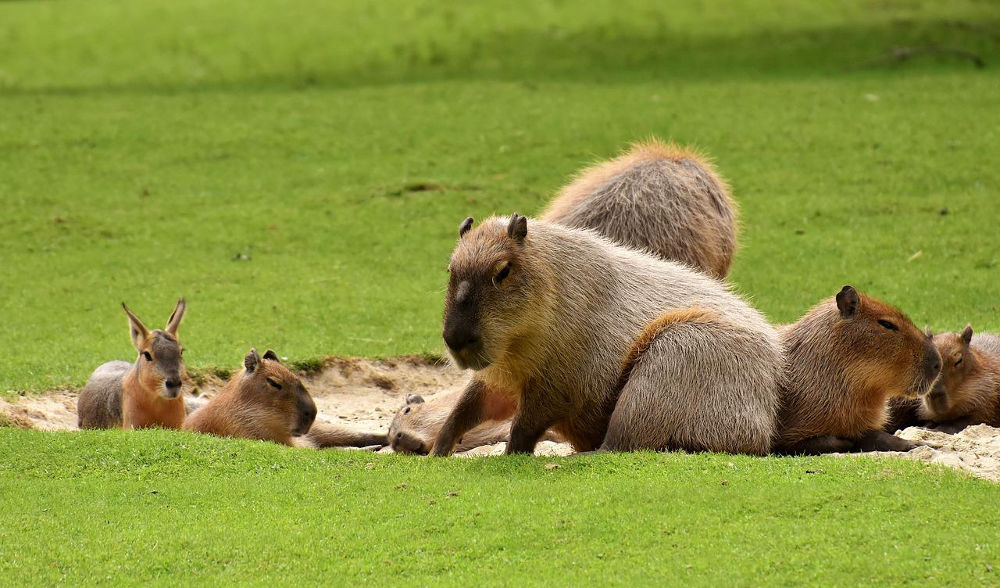
This animal may not be for those who aren’t fans of rodents, but it sure is one of the cutest exotic animals in our list of legal exotic animals in Texas! Capybaras are known for being the world’s largest and possibly cutest rodent. Originally from South America, Capybaras love the water, so you’ll need a swimming pool. They are considered to be semi-aquatic creatures; they even have webbed feet and can hold their breath for five minutes underwater! You don’t need to have a fancy swimming pool. An above-ground swimming pool would work just fine for the capybara looking to take a refreshing dip in the pool.
Capybaras are not known for being aggressive, but like any animal, when feeling threatened, they will react to defend themselves. Capybaras primarily will use their sharp teeth to defend themselves. But generally, a capybara will usually make a quite loving and affectionate pet. Though they may be just a little on the shy side until they warm up to you!
In the wild, capybaras eat a diet consisting of various grasses and aquatic plants. Like some other rodents, capybaras will sometimes eat their own poo if the nutrients don’t get digested fully the first time around. In captivity, Orchard or Timothy hay will be the best option for a capybara as it provides the proper nutrients and is tough enough to keep their teeth from becoming overgrown.
The biggest concern when keeping a capybara as a pet is to ensure that they have enough company. They are not solitary creatures and need to have a companion to spend time with in addition to their owner. So getting two capybaras or at least a similar companion for one is a must for a happy pet.
Sloth
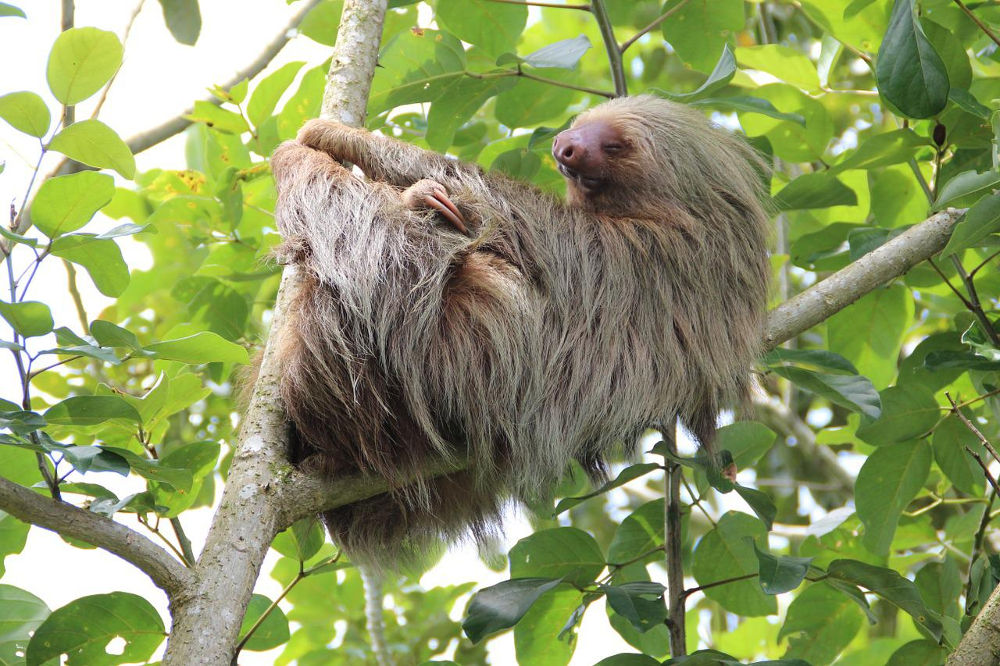
Sloths are legal to own in Texas, but they are certainly not as endearing of a pet as capybaras. While it is possible to own one and provide it with a high quality of life, Sloths are not typically as loving or friendly as other pets may be. They do not enjoy being pet, held, or groomed. They also require a great deal of specialized care and have intensive requirements for their environment that will be quite expensive to set up and maintain.
A sloth won’t do well living in the house as other pets may do. Instead, they need an enclosure that mimics the hot, humid rainforests where they are from in Central and South America. If a sloth gets too cold and its body temperature drops, its entire digestive system could shut down. Typically, they thrive in 90 to 100 degrees Fahrenheit temperatures with about 90% humidity! They’ll need trees and branches to climb around on as well. Sloths are also nocturnal, so they most likely won’t be up and moving around at the same time of day as you.
In the wild, sloths love eating various leaves. Zoos and wildlife rehabbers usually offer them leaf eater of food in pellet or stick form. They also enjoy lettuce, some fruits and veggies like apples and carrots, and even dandelion greens. But leaves off the trees in your backyard are not an option for sloths since they won’t be native to Central America and South America and could potentially have been exposed to pesticides or chemicals.
Coatimundi
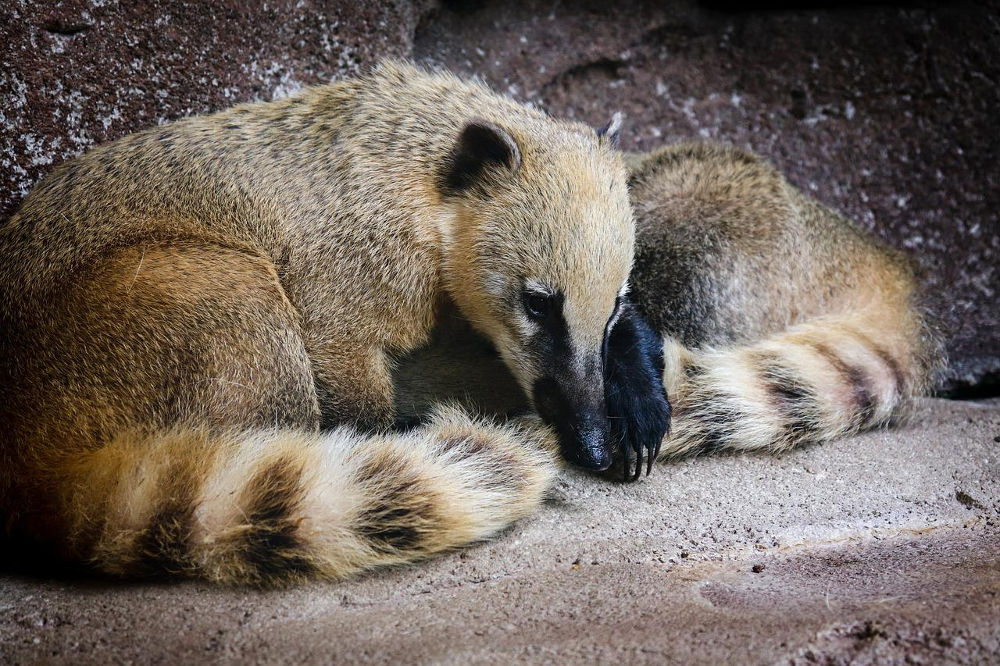
A Coatimundi is another animal that is native to Central and South America. Coatimundi, like sloths, has many requirements, but they are much more likely to want to interact with their owners. They are quite intelligent little animals, but they can be stubborn sometimes, so do keep that in mind! Many people affectionately call them coatis.
In captivity, they can live to be as old as fifteen years. As cute as they are, coatimundis should not be kept around children as they have fangs and sharp claws. Especially upon reaching adulthood, coatis can become aggressive and may need to be neutered or spayed by a veterinarian to alleviate the aggressiveness. Finding a veterinarian who works with coatis, though, may be tricky because coatis are so rare.
Coatis also require a carefully formulated diet. In captivity, 60% of their food intake should come from a high-grade, grain-free dog food. It should also include fresh fruit (10%) and fresh vegetables (10%). Finally, the last 20% of their diet should be made of poultry, beef, or eggs. Coatis are natural foragers, meaning they eat throughout the day as they look for food, so their food will need to be scattered and hidden around their enclosure to help encourage their natural instincts.
With great patience, you can train a coati to do basic tasks like sitting, laying down, and most importantly, using a litter box. They can also learn how to walk on a leash. Coatis will get along with other animals you may have, like cats and dogs. But they can be destructive, so you’ll need to baby proof or coati-proof anywhere they go. It is also recommended not to let them around anything expensive or cherished since they have such destructive claws and sharp teeth.
Lemur
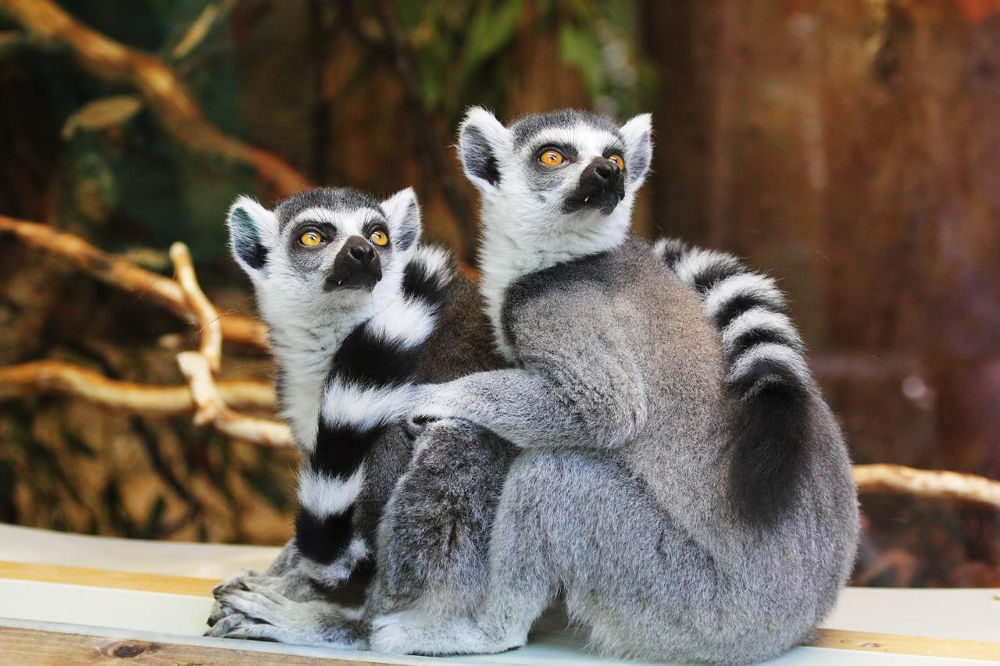
Lemurs, while illegal in most states, are legal to keep in the state of Texas. However, this doesn’t necessarily mean they will make a good pet. Although they are adorable creatures, especially as babies, they eventually grow up, which can bring along all the hormones and aggression that often goes along with adult animals. In adulthood, especially females, they can be quite temperamental and have been known to attack owners or slap them.
Some people have found success in keeping these animals as pets, but they recognize that they are a huge responsibility and require significant time, money, and dedication. Lemurs are also social animals and don’t do well without the company of other lemurs. Unlike other animals, the company of humans just isn’t enough for a lemur.
Something you should also consider is that they are incredibly smelly. Lemurs communicate with other lemurs through a process called scent marking. They will rub these glands on any surface that they want to claim as their own. And they will mark with their urine as well, so litter box training is almost impossible. On top of being smelly, they are loud, too! Their vocalizations sound screechy, but they have plenty of variations of this screech for whatever thing they are trying to communicate. While legal in Texas, these animals just aren’t the best pets for most people.
Kinkajou
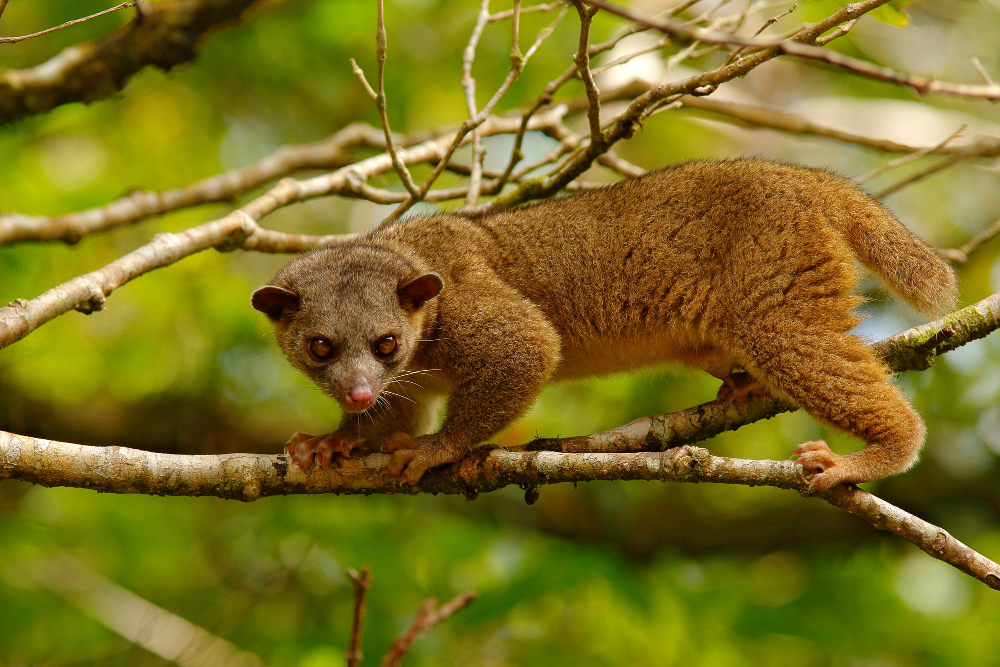
Kinkajous are native to the tropical rainforests of Southern Mexico down to Brazil. The animal's name comes from a word that translates to "honey bear." These creatures definitely have a significant sweet tooth and love to get honey out of beehives. Though they look like they might be monkeys, kinkajous are not primates. Instead, they are more closely related to raccoons and coatimundis.
Kinkajous are one of only two carnivores with a prehensile tail. A prehensile tail is a tail that is used to grasp onto food, to snuggle up with, for balance, and for holding onto branches. Kinkajou are naturally nocturnal and arboreal, meaning that they jump from tree to tree high in the canopy of the rainforest rather than being on the ground. As previously mentioned, they are technically carnivores due to occasionally using their canine teeth to eat eggs, hatchlings, and insects. But primarily, they love to eat fruit and nectar.
These animals are smart and strong-willed- a sometimes dangerous combination! Owners will often have to completely baby proof the areas of their home that the kinkajous go in since they can figure out just about anything. They are also sometimes called thieves since they'll take something, often obsess over it, and refuse to give it back. They are also known to live a very long life in captivity, so they are absolutely a lifelong commitment. They generally live about 20 to 25 years but, in some cases, have grown as old as 40 years old.
Hedgehog
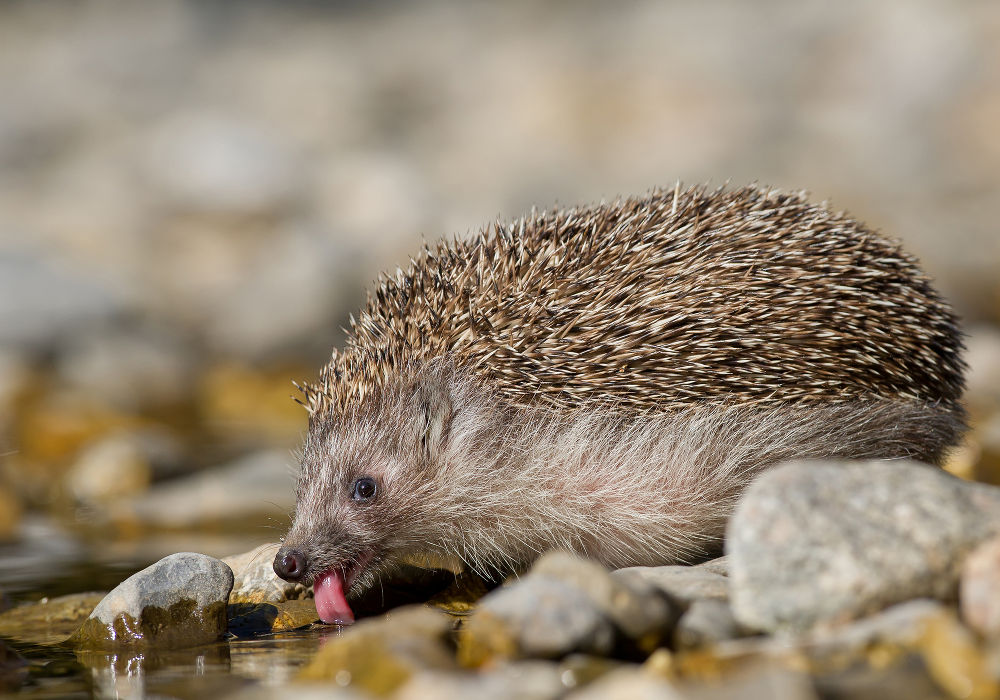
Hedgehogs are definitely one of the easier of the exotic animals in Texas to keep as a pet. Sometimes called a pincushion with legs, hedgehogs are small omnivorous mammals with spiked hair-like quills on their back but are still somewhat flexible and soft enough to touch. Contrary to popular belief, a hedgehog is not related to a porcupine but instead is more closely related to shrews and moles.
The hedgehog uses its back's 3,000 to 5,000 quills to protect itself. When threatened, the hedgehog will protect its soft belly by curling its head and tail into a ball most predators cannot open. They can be found all over the world in deserts, forests, and savannas. They are most active at night and use that time to forage for food. In the wild, they eat primarily insects but also sometimes slugs.
In captivity, they can be fed a kibble diet formulated specifically for hedgehogs supplemented with fresh veggies, fruits, and even crickets, mealworms, and waxworms. These animals also have a quirk that some owners might find quite fascinating. They will taste or chew on an object they are interested in and produce a foamy saliva. They will then rub the saliva they produced all over their body in a process referred to as self-anointing. Unfortunately, there is very little information out there on why they do this, but one hypothesis is that it is a way to mask their own scent in an attempt to camouflage or hide their presence.
Asian Leopard Cat
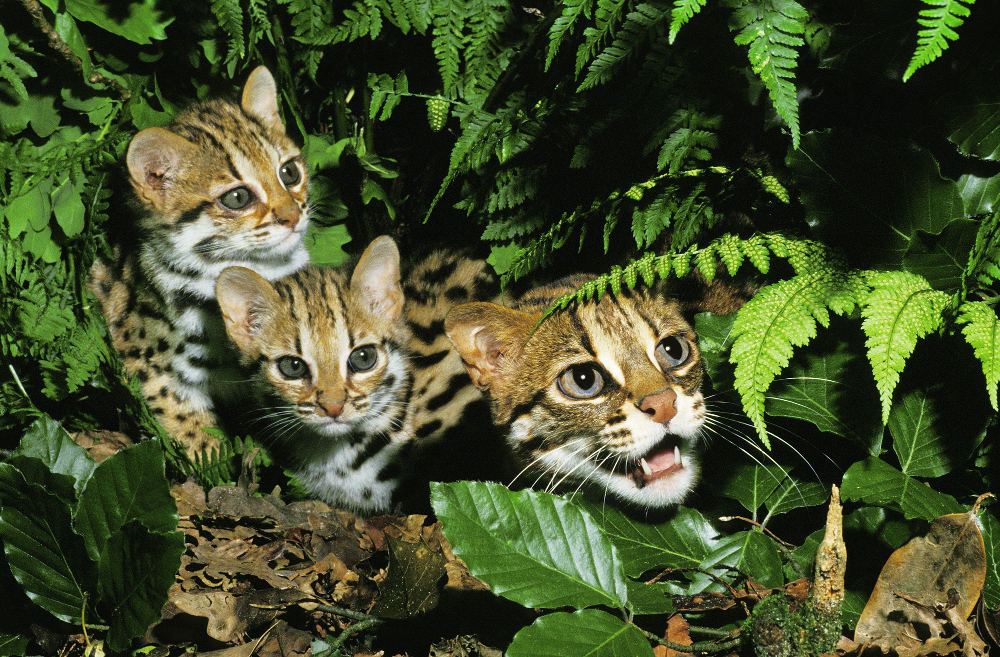
The Asian Leopard Cat is the wild ancestor of the modern-day domesticated Bengal cat. A breeder in 1963 crossed domestic cats with the Asian Leopard cat to develop the Bengal. While Bengals are domesticated, the Asian Leopard cat is not. In Texas, however, these cats are legal to own. These cats typically weigh between 8 and 15 pounds and have a distinctively beautiful coat with elongated spots and some stripes. These cats are known to eat small prey like birds, rodents, some amphibians and reptiles, fish, and insects. Unlike many cats that like to play with their food before killing it, these hunters tend to waste no time and go straight for the kill.
While some keep these cats as pets, Bengals are typically far more preferable since the Asian Leopard Cat is undomesticated and maintains its wild nature, even while in captivity. One interesting thing about this cat, and Bengals too, is that they are quite confident in the water. You might even see them running towards the sound of running water and loving the bathtub. Since they are known to hunt for fish and shellfish, they have grown to enjoy swimming.
Another interesting fact about the Asian Leopard Cat is that humans first began trying to domesticate them about 5,000 years ago but eventually stopped and switched to a different cat to domesticate. These people probably chose to pursue domesticating another cat because of the Asian Leopard Cats' shy, elusive, and wary nature.
Fennec Fox
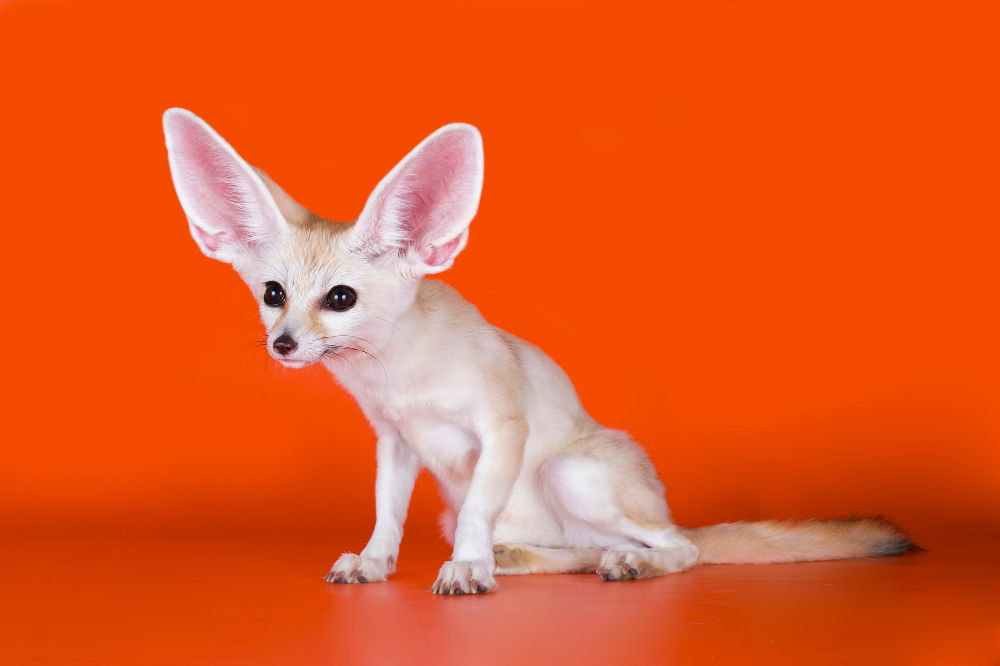
Fennec Foxes are the smallest of all members of the dog family, or canids, though they may have the largest ears! These tiny animals are usually only 14 to 16 inches long with another 7 to 12 inches of fluffy tail. In the wild, they can be found in Africa and Arabia in the desert and arid regions. They are specifically built to survive in these regions with huge ears that help dispel heat (and help them hear prey or predators) and paws with lots of fur on the bottom to provide traction and protection from the hot sand. And since they can get hydration through their food, they can go for long periods without drinking water.
They eat small rodents, some lizards, and small birds and eggs in the wild. To help hydrate, they sometimes will eat roots, fruit, and leaves. They are loud and vocal animals in their communication. You’ll often hear them bark, growl, howl, whimper, or make shrieking sounds, squeaks, or chattering noises. In captivity, they can live up to eleven years.
Many people will want these animals as pets due to their size and the nearly comical size of their ears. But they don’t make great pets for everyone. They are extremely high-energy animals who have a great need for socialization, either with other animals or their humans. When a Fennec Fox is kept in too small an area and not provided with enough room to run, play, explore, and learn, they tend to get destructive and will chew on anything and everything they can get their teeth on. They can be aggressive towards other dogs and cats, especially about food. Their bite is incredibly strong as well, so they are not meant to be around children. It is usually only recommended for adults without children or other pets to have a Fennec Fox.
Sugar Glider
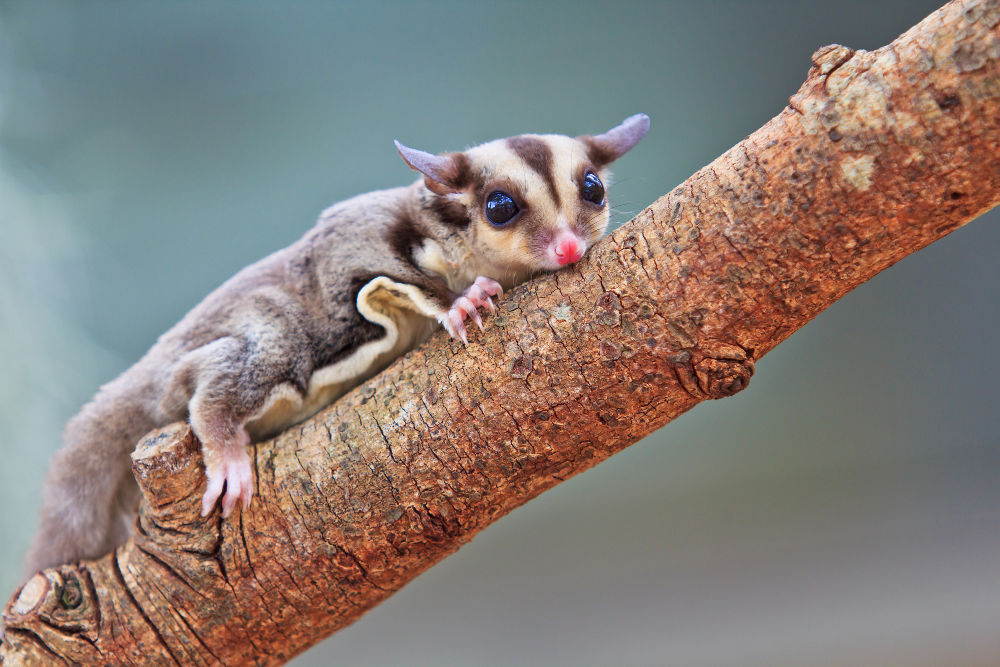
Sugar Gliders are one of the most popular exotic pets since they are so small and cute. A native to Australia and Indonesia, these marsupial pets are similar to squirrels, except they have bigger eyes, gray fur, and black markings. They are also known for having a gliding membrane that acts like wings and extends from the front and back limbs on each side of the sugar gliders’ body. This thin, skin-like membrane helps them fly through the air as they jump among the trees.
They can be wonderful pets since they are playful and social but are definitely not for beginners. They have a specific diet that needs following, frequent handling to keep them friendly, and tons of room to exercise. They also do best in pairs consisting of one male and one female since they are social creatures. Sugar gliders are omnivorous and eat plants, animals like small birds or rodents, fruits, insects, nectar, and sap.
Unfortunately, sugar gliders can easily become stressed, especially when awakened during their daytime sleeping hours. Being in too small of an enclosure and lots of activity and noise during the daytime can be incredibly stressful for these animals, and they can suffer from self-mutilation where they’ll scratch and chew at their skin and fur. They are also more prone to dental disease because of their sweet tooth and can easily become malnourished if not provided with a proper diet. But these cute creatures can live for as long as ten to fifteen years when properly cared for.
Spotted Genet
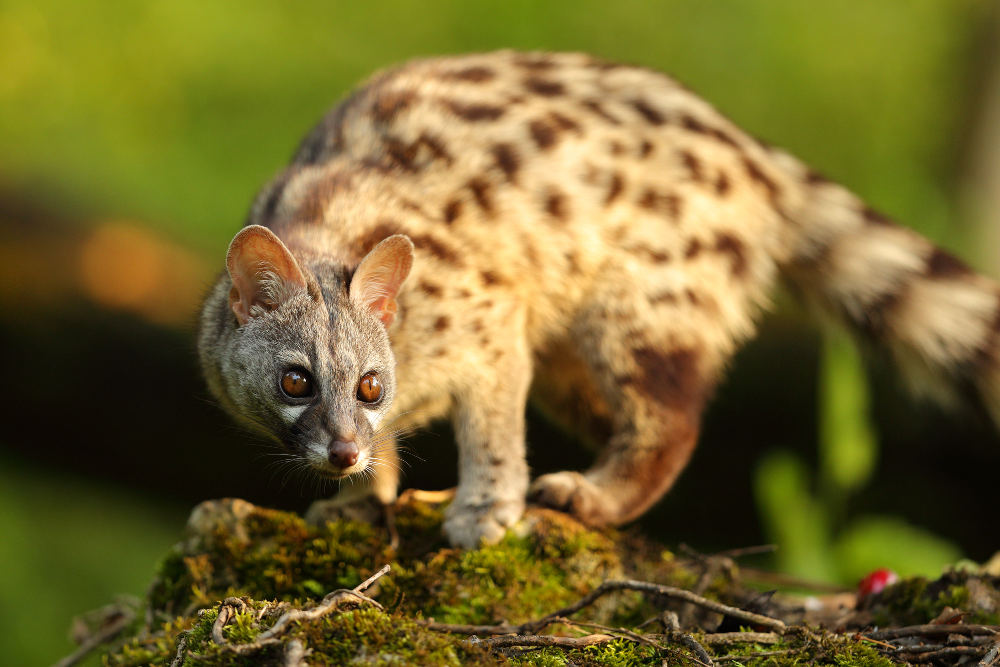
The Spotted Genet is one of the more unique animals on this list and is often unknown to most people except those interested in owning exotic animals in Texas. Genets are known to be part of a suborder called Feliformia, a suborder including felines and mongooses. They look like a ferret and a cat mixed together, but even that doesn’t quite capture their uniqueness.
Genets aren’t typical pets in that they are not easy to care for, aren’t overly friendly, and require a great deal of care to be able to adapt to life in captivity among humans. Especially when not handled from a young age, genets can be incredibly skittish and fearful of any loud noises or sudden movements. They are incredibly independent animals and will not wish to cuddle with their owner by any means. At most, they will climb on you and perch on your arm.
They can’t necessarily be litter box trained, but they generally have a particular area where they like to go to the bathroom, so owners will often just put litter boxes in that area. Regarding diet, genets have similar dietary needs to cats, including high levels of taurine and low carbohydrates. Some owners do feed their genets cat food, but it is always best to go with a high-quality food from a reputable brand that only uses human-grade ingredients.
Conclusion
Bringing home an exotic pet is certainly an exciting adventure. Still, you must take all the necessary steps and precautions before doing so to ensure that you comply with all legalities and that you can provide the absolute best care for that animal. No matter the species, all pets deserve to have their needs met and to have a loving home. As mentioned in this list, there are several options for those living in Texas who love the idea of having an exotic pet beyond just a typical cat or dog. If you are up for the challenge of owning legal exotic animals in Texas and you’ve done all your research, maybe an exotic pet will be just right for you!
FAQ
What animals does Texas have?
Texas is a large state with diverse ecosystems, including grasslands, forests, deserts, and coastal areas, which support a wide variety of wildlife. Here are some notable animals found in Texas:
Mammals:
White-tailed deer,
Armadillo (state small mammal),
Black bear,
Bobcat,
Coyote,
Gray fox,
Mountain lion (also known as cougar or puma),
Ocelot,
Pronghorn antelope,
Mexican free-tailed bat (state flying mammal),
Eastern cottontail rabbit,
Javelina (collared peccary),
Bison (state large mammal)
Birds:
Northern mockingbird (state bird),
Scissor-tailed flycatcher,
Painted bunting,
Roadrunner,
Red-tailed hawk,
Crested caracara,
Wild turkey,
Great horned owl,
Whooping crane,
Brown pelican
Reptiles:
Texas horned lizard (state reptile),
Western diamondback rattlesnake,
Copperhead snake,
Cottonmouth (also known as water moccasin),
Alligator (found in southeastern Texas),
Texas rat snake,
Eastern box turtle
Amphibians:
Texas blind salamander (endemic to Texas),
Houston toad (endemic to Texas),
Gulf Coast toad,
Bullfrog,
Gray treefrog
Fish:
Guadalupe bass (state fish),
Red drum (also known as redfish),
Largemouth bass,
Catfish,
Alligator gar
Invertebrates:
Monarch butterfly,
Tarantula,
Red imported fire ant
What animal is most likely to kill you in Texas?
Although the risk of being killed by an animal in Texas is relatively low, venomous snakes pose the most significant threat to humans. There are several venomous snake species found in Texas, with the Western Diamondback Rattlesnake being the most common and potentially dangerous.
Other venomous snakes in Texas include:
Copperhead
Cottonmouth (also known as water moccasin)
Coral snake
While snake bites can be dangerous and sometimes even fatal, they are relatively rare. The risk of being bitten by a venomous snake can be minimized by taking proper precautions:
Be aware of your surroundings and avoid areas where snakes might be hiding, such as tall grass, rocks, or brush.
Wear sturdy boots and long pants when walking in areas where snakes might be present.
Do not attempt to handle or approach snakes, even if you think they are non-venomous.
Be cautious when stepping over logs, rocks, or other objects where snakes might be hidden.
In the event of a snake bite, seek immediate medical attention.

